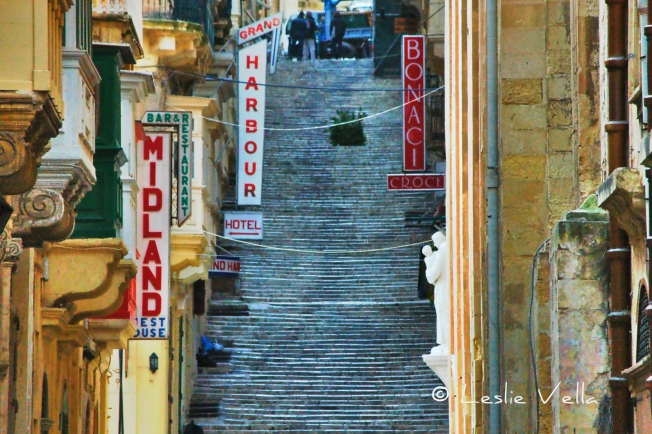
A clothes line amidst the fennel stalks.
A hot August morning on Comino. The rising sun’s heat is tempered by the occasional straggling cloud providing a few overcast seconds of relief and a stiff breeze of Majjistral, Malta’s prevailing north west wind which is nature’s alternative to refreshing air conditioning.
We are on our annual pilgrimage to this desolate little island. Arid, but full of life. Ruggedly beautiful with ever changing scenery. A two and a half square kilometre island. One tiny corner of which, its Blue Lagoon, is over-run by up to five thousand visitors daily. Leaving the rest to people like us. A fair deal, I think. Amazing how even on such a small landmass, you can just climb the small hill overlooking Cominotto Island and all evidence of the crowds dissipates into thin air. No sight, no sound. Nothing.
We have climbed from the inlet of San Niklaw and walked across Comino’s main thoroughfare, Triq Kemmunett. At the location of the old Bakery building we take a sharp right and climb steeply up Triq il-Gvernatur, the road leading to the imposing Santa Maria Tower, part of a network of coastal watchtowers built by the Knights of St. John.
Our final destination today is the small mooring place at Wied Ernu, a tiny cleft in the island’s southern coast which used to serve as the landing for boats from Malta during the time of the twentieth century agricultural colony on Comino.
The colony is long gone, but its remains, mostly in ruins and disrepair are spread all over the island.
On the way back, a small sign of human activity. One of the handful of people which stayed behind when the colony disbanded in the late 1960s. True Comino-born and bred. Hanging clothes to dry on a line. Surrounded by stalks of wild fennel.
A beautiful sight. A sign of humanity’s resilience and adaptability. And oneness with nature.
The fresh breeze, the aromatic smell of ripening fennel seeds and the slight waft of damp, clean laundry hanging out to dry in the wind. Elements which make me return to Comino year after year.





























